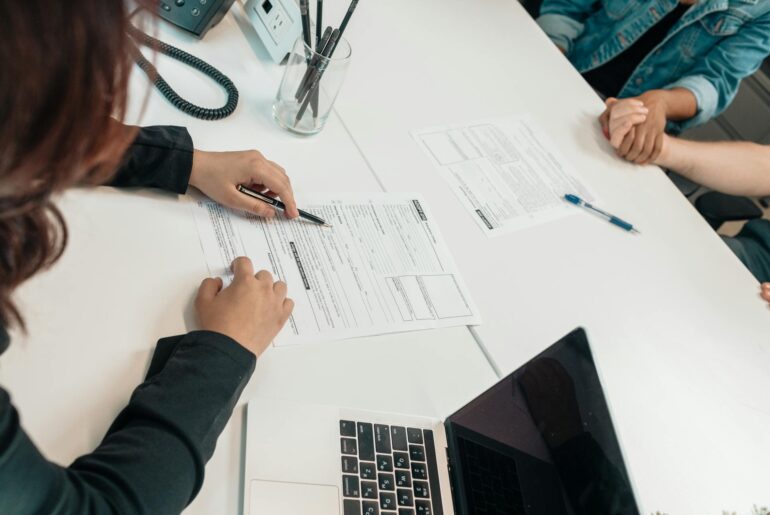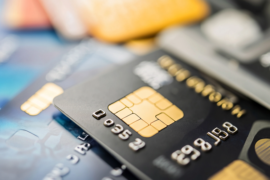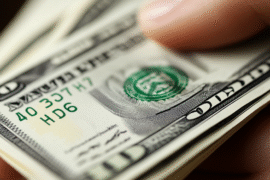This article may contain references to products or services from one or more of our advertisers or partners. We may receive compensation when you click on links to those products or services. Nonetheless, our opinions are our own.
The information presented in this article is accurate to the best of our knowledge at the time of publication. However, information is subject to change, and no guarantees are made about the continued accuracy or completeness of this content after its publication date.
- Check Holds Explained
- Introduction
- What Is a Check Hold?
- The Basics of Check Processing
- Common Reasons Banks Hold Checks
- How to Handle a Check Hold
- Required Documents and Information
- Steps to Manage a Check Hold
- Ways to Minimize Check Hold Impact
- Wrapping Up Bank Check Hold Practices
- Frequently Asked Questions
- Recommended Reads
Check Holds Explained
- A check hold occurs when a bank delays access to funds from a deposited check to verify its authenticity or ensure sufficient funds.
- Federal Regulation CC limits most check holds to two business days, but exceptions can extend this period.
- Common reasons for holds include large deposits, new accounts, overdraft history, and potential fraud prevention.
- You can reduce the likelihood of holds by using direct deposits, depositing early, and maintaining a good account history.
- Understanding your bank’s check hold policies and proactively communicating with them can minimize inconvenience.
Introduction
Depositing a check and expecting immediate access to your funds can sometimes lead to frustration if a hold is placed on the deposit. This waiting period, known as a check hold, is a common banking practice designed to protect both you and the bank. By understanding why holds occur, how long they last, and what you can do to manage them, you can avoid unnecessary stress and plan your finances effectively.
What Is a Check Hold?
A check hold refers to the time during which a bank restricts access to funds from a deposited check. This delay allows the bank to confirm the check’s legitimacy and verify that the payer’s account has sufficient funds. While this process may seem inconvenient, it is a protective measure against potential fraud and financial losses.
Federal laws, such as Regulation CC, set the maximum allowable time for a check hold. Generally, most checks must clear within two business days. However, certain exceptions permit banks to extend this period.
The Basics of Check Processing
Check processing involves multiple steps. After a check is deposited, the bank sends it to the payer’s financial institution for verification. If deposited before the bank’s daily cutoff time (often mid-afternoon), the check begins processing that business day; otherwise, it starts the next day.
Typically, a portion of the depositoften $200 is made available by the next business day, with the remaining funds accessible by the second business day. Exceptions to this timeline may include new accounts, large deposits, or checks flagged for potential fraud.
Voted "Best Overall Budgeting App" by Forbes and WSJ
Monarch Money helps you budget, track spending, set goals, and plan your financial future—all in one app.
Get 50% OFF your first year with code MONARCHVIP
Common Reasons Banks Hold Checks
New Accounts
Banks may place longer holds on checks deposited into accounts less than 30 days old.
Large Deposits
Checks exceeding $5,000 may require extended verification time.
Overdraft History
Accounts with frequent overdrafts may face additional scrutiny.
Fraud Concerns
Suspicious or altered checks often result in longer holds.
By understanding these factors, you can anticipate potential delays and plan accordingly.
How to Handle a Check Hold
While check holds may be unavoidable at times, understanding the process and implementing a few strategies can help you minimize their impact.
Required Documents and Information
- Deposit Receipt: Always keep your receipt, as it includes the deposit date, amount, and estimated availability.
- Bank Account Details: Regularly monitor your available balance to track held funds.
- Direct Deposit Option: Whenever possible, use direct deposit to eliminate delays associated with paper checks.
Steps to Manage a Check Hold
Step 1: Identifying If Your Check Is Subject to a Hold
Review your deposit receipt or account statement for details about the hold.
Check your bank’s cutoff time; deposits made after this time may experience delays.
Step 2: Communicating With Your Bank
If you need quicker access to funds, contact your bank. Be prepared to provide the check’s details and your reason for requesting an expedited release.
Review your account agreement for specific terms related to check holds.
Ways to Minimize Check Hold Impact
Strategies for Faster Check Processing
- Direct Deposits: Opt for direct deposits whenever possible for faster access to funds.
- Mobile Deposits: Use mobile banking apps to deposit checks, which often speeds up processing.
- Wire Transfers: Consider wire transfers for urgent transactions, though they may involve fees.
Tips for Managing Your Finances During a Hold
- Monitor Available Balances: Regularly check your balance to avoid overdrafts or declined transactions.
- Maintain a Financial Cushion: Keep a reserve of accessible funds to manage expenses during check holds.
- Communicate With Creditors: Inform creditors of potential delays to negotiate extended payment terms.
Wrapping Up Bank Check Hold Practices
Understanding check holds is essential for effective financial management. While holds may feel inconvenient, they serve to protect both you and the bank. By knowing how check processing works and implementing strategies to minimize delays, you can avoid disruptions to your finances. If you encounter a hold, open communication with your bank is key. Stay informed and proactive to ensure smooth financial transactions.
Frequently Asked Questions
What triggers a check hold at the bank?
Large deposits, new accounts, overdraft history, and suspected fraud are common triggers for holds. Banks use these indicators to prevent losses and verify fund legitimacy.
How long can a bank legally hold my check?
Federal Regulation CC generally limits holds to two business days, but certain situations, such as very large deposits or suspicious activity, can allow banks to extend the period up to seven days.
Can I access any funds before the hold is lifted?
Yes, banks typically make $200 of the deposit available by the next business day, with the remainder accessible after the hold period ends. This partial availability can help with urgent expenses.
What should I do if I disagree with a hold decision?
Review your account agreement and contact your bank with supporting details to resolve the issue. Banks may reconsider based on your account history and the nature of the check.
Are there checks not subject to holds?
Certain types of checks, such as U.S. Treasury, cashier’s, certified, and government checks, may be made available more quickly. However, this depends on bank policy and how the check is deposited.

Reviewed and edited by Albert Fang.
See a typo or want to suggest an edit/revision to the content? Use the contact us form to provide feedback.
At FangWallet, we value editorial integrity and open collaboration in curating quality content for readers to enjoy. Much appreciated for the assist.
Did you like our article and find it insightful? We encourage sharing the article link with family and friends to benefit as well - better yet, sharing on social media. Thank you for the support! 🍉
Article Title: Why Banks Put Holds on Checks and How to Avoid Delays
https://fangwallet.com/2025/08/01/why-banks-put-holds-on-checks-and-how-to-avoid-delays/The FangWallet Promise
FangWallet is an editorially independent resource - founded on breaking down challenging financial concepts for anyone to understand since 2014. While we adhere to editorial integrity, note that this post may contain references to products from our partners.
The FangWallet promise is always to have your best interest in mind and be transparent and honest about the financial picture.
Become an Insider

Subscribe to get a free daily budget planner printable to help get your money on track!
Make passive money the right way. No spam.
Editorial Disclaimer: The editorial content on this page is not provided by any of the companies mentioned. The opinions expressed here are the author's alone.
The content of this website is for informational purposes only and does not represent investment advice, or an offer or solicitation to buy or sell any security, investment, or product. Investors are encouraged to do their own due diligence, and, if necessary, consult professional advising before making any investment decisions. Investing involves a high degree of risk, and financial losses may occur including the potential loss of principal.
Source Citation References:
+ Inspo
There are no additional citations or references to note for this article at this time.












































